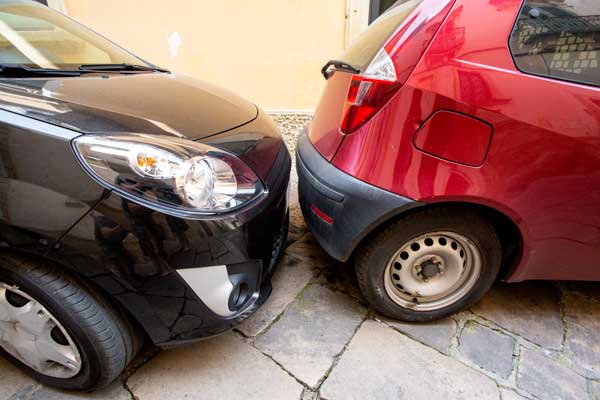We’ve all driven in an unfamiliar place, city, or road. When you are driving somewhere you have never driven before, all of your senses are heightened; you’re scanning the road signs intently, watching the cars next to you, and paying attention to the speed limit. As a matter of fact, you probably are driving very carefully because you are not familiar with your surroundings and your environment.
But –more often times than not, we are driving in areas that we are intimately familiar with. Sometimes, drivers in California and Nevada find themselves in situations where they drove somewhere purely from “muscle memory”, where they intended to go to another destination, but instead, because they are so familiar with the road in front of them, they defaulted to driving home, to work, or to school. Other times, some California or Nevada motorists may arrive at a destination and upon reflection, feel like the actual car ride there was a blur; uneventful, and with little conscious effort on their part.
The “Close to Home” Effect
This familiarity with your surroundings can have negative consequences. A study published by the National Highway Traffic Safety Association revealed that about 52% of accidents occurred within five miles of someone’s home. In addition, another study conducted in 2017 indicated that the “close to home” effect for car accidents didn’t apply to novice drivers, probably because novice drivers are driving with the heightened sense of care and effort as they are still learning how to safety operate a motor vehicle. This same study also found that most accidents that occur close to home also include diverted attention as opposed to fatigue or other factors.
Other High Collision Areas
Other Areas where there is a high probability that motorists could be involved in an accident include:
- Stoplights, where drivers could be racing to beat the red light and easily get rear-ended or rear end another driver.
- Intersections, which can be confusing as to whose right of way it may be as well as roundabouts where drivers may have little to no experience navigating.
- Parking Lots/ Garages, where drivers are driving to maneuver tight spaces and back out, as well often times may ignore the posted speed limit signs and maneuver around a high volume of pedestrians.
- Rural Areas, specifically highways where drivers may have decreased attention due to the monotony and repletion of scenery. Coupled with the need to cover long distances at one time at high speeds, this could easily cause drivers to “zone out” and cause a car crash.
Oftentimes, motorists will try to beat the stoplight to avoid waiting at a red light, or simply, may misjudge how long it will take them to brake at the speed which they were previously traveling. In these cases, drivers are most likely to get rear ended by another driver at a stop light as those around them may not be able to stop their car in time.
Intersections pose another threat to drivers. We’ve all been at an intersection where the million-dollar question usually is: whose right of way is it? In situations like these, drivers can become easily confused and in taking a chance to figure out the right of way could make a very risky decision that could lead to a car accident with someone else who also thought they had the right of way in that moment.
Even worse are the dreaded roundabouts which can have very confusing layouts, and traffic rules. In addition, roundabouts are not incredibly common on the road so most drivers have little to no experience using roundabouts on their day-to-day drives. Using roundabouts can be a significant source of stress for drivers, and, in the desire not to miss their turn, they make risky decisions which could quickly lead to an accident.

Parking Lots usually include many accidents that involved parked vehicles. Sometimes, drivers misjudge the size of their vehicle and think that they may have room when they do not. Oftentimes, cars in garages are hit while other drivers are backing up, or when drivers are trying to get into a spot.
In addition, even though there may be posted signs about speed limits, sometimes drivers ignore these signs oftentimes driving above the average 5mph posted signs. This increased speed along with the prevalence of pedestrians who can sometimes appear out of nowhere while walking to their car or walking away from it, could cause drivers to swerve or brake suddenly, quickly creating a dangerous situation for a car accident.
Lastly, rural areas account for about 46% of car accidents. This may be attributable to the fact that rural roads and highways often have higher speed limits, and in driving down the same type of road for a long time, a driver’s attention can become easily diverted as all their surroundings seem to blend together. While it may seem easy to drive on a highway for a long period of time, the monotony of rural roads can easily become fatal.
All too often we allow our brains to go on “auto-pilot” while driving a vehicle. Most importantly, we tend to drive on “auto-pilot” the closer we are to home, as our chances of letting our guard down increase since we are incredibly familiar with the layout of the roads. This familiarity, while beneficial at times, can prove disastrous in increasing your risk for a car accident.
If you or someone you know has been injured following, or as a result of being involved in a car accident, The Heidari Law Group can help you recover damages whether your accident occurred close to home, or far away. With offices in Fresno, California, Sacramento, California, Los Angeles, California, Irvine, California, and Las Vegas, Nevada, the Heidari Law Group has qualified personal injury attorneys who are experts in recovering damages for pain and suffering due to car accidents.
Regardless of whether you’ve been in a car accident in California or Nevada, the Heidari Law Group is able to assist you at every step of your recovery process and ensure that you are equipped with all the tools that you need in order to receive fair compensation. Reach out to an experienced auto accident attorney for a free case evaluation today!
***Disclaimer: This blog is created by Heidari Law Group for educational purposes. This article provides a general understanding of the law. It does not provide specific advice. By using this site and reading through this blog, there is no attorney-client relationship created between you and any member of Heidari Law. Further, due to the constant change of the law, some parts of the information above may no longer be good law.



